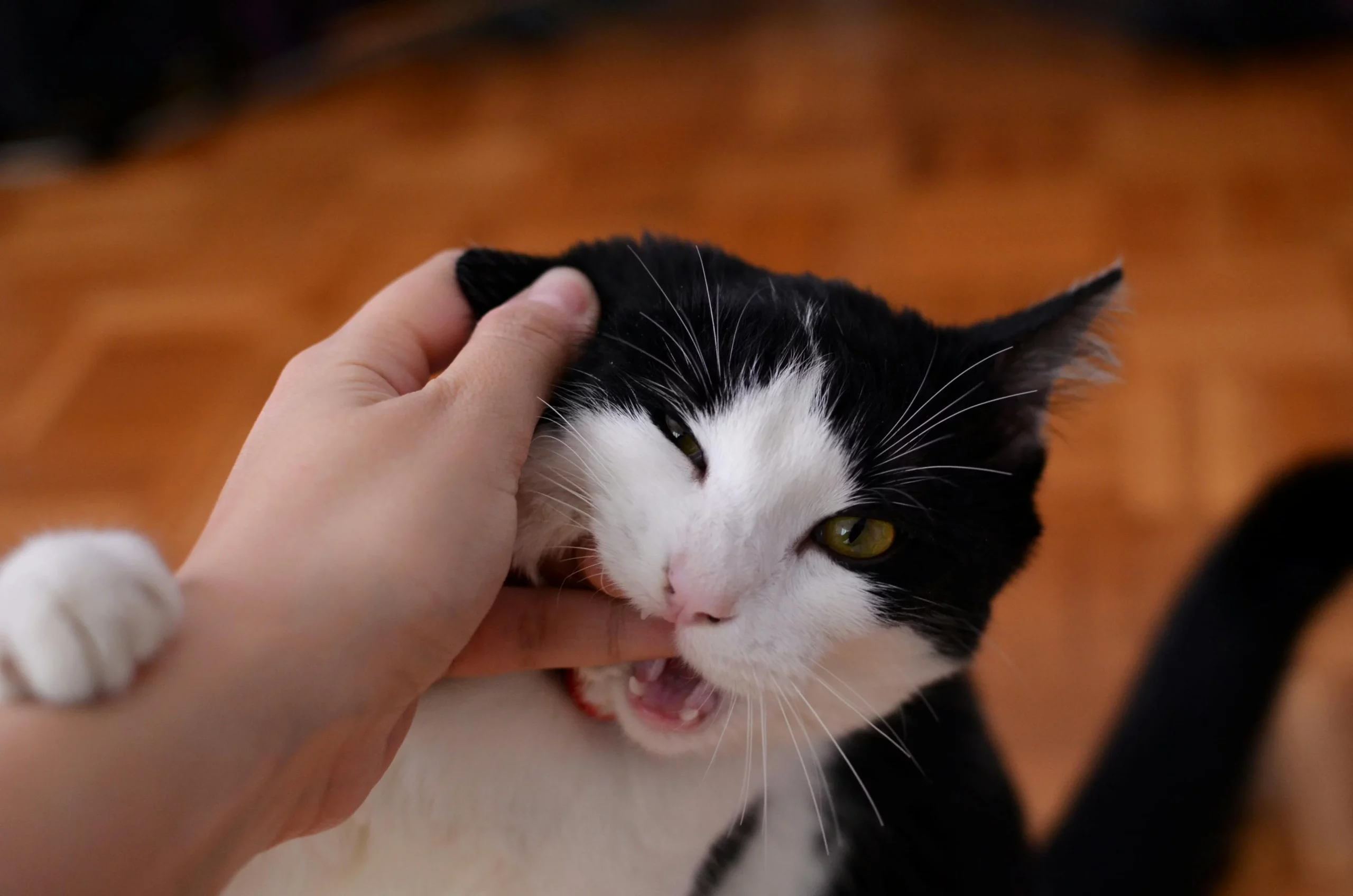Taming Tiny Talons: How to Stop Your Cat from Biting or Scratching
Contents
Cats are known for their playful nature, but sometimes their playful nips and swats can turn into unwanted biting or scratching. While these behaviors are natural instincts, they can be unpleasant and even harmful for both you and your feline friend. Fortunately, with patience, understanding, and the right techniques, you can effectively curb these behaviors and foster a harmonious relationship with your cat. Another behavioral query could be: Why Do Cats Knead?
Understanding the Reasons Behind Biting or Scratching
Before addressing the behavior, it’s crucial to understand the underlying reasons why your cat might be biting or scratching:
- Playful Behavior: Kittens and young cats often explore the world using their mouths and paws. Biting and scratching might be their way of initiating play or engaging with you.
- Overstimulation: While cats enjoy playtime, too much stimulation can backfire. Overexcited cats might resort to biting or scratching, especially during rough play.
- Fear or Anxiety: Cats can become defensive if they feel scared or cornered. In such situations, they might resort to biting or scratching as a means of self-protection.
- Medical Conditions: Underlying health issues like dental problems, arthritis, or neurological disorders can sometimes manifest as biting or scratching.
Effective Strategies to Stop Biting or Scratching
Once you understand the why behind the behavior, you can implement the following strategies to effectively stop your cat from biting and scratching:
1. Redirect and Replace:
- Redirect playful bites and swats with appropriate toys. When your cat exhibits unwanted biting or scratching during playtime, immediately stop engaging and offer an alternative outlet for their energy, such as a feather wand or a scratching post.
- Reward calm and gentle behavior. When your cat interacts with you without biting or scratching, praise them verbally or offer a treat. This positive reinforcement encourages desired behavior.
2. Manage Overstimulation:
- Pay attention to your cat’s body language. During play sessions, watch for signs of overstimulation like flattened ears, dilated pupils, or a twitching tail.
- End play sessions at the first sign of overexcitement. This prevents them from escalating to biting or scratching and teaches them that calm play is rewarded.
- Provide a variety of enriching activities. Climbing structures, interactive toys, puzzle feeders, and catnip toys can keep your cat mentally and physically stimulated, reducing the urge to bite or scratch out of boredom.
3. Create a Safe and Secure Environment:
- Ensure your cat has access to hiding spots and vertical spaces. This allows them to feel secure and retreat when overwhelmed or stressed, preventing them from resorting to biting or scratching as a defense mechanism.
- Address any potential stressors in your home. Loud noises, new pets, or changes in routine can make cats anxious and lead to unwanted behavior.
- Schedule regular vet checkups to rule out any underlying medical conditions that might be contributing to the biting or scratching.
4. Avoid Punishment-Based Techniques:
- Punishing your cat through yelling, hitting, or spraying them with water is ineffective and counterproductive. It can damage your bond with your cat and even worsen the behavior due to fear or anxiety.
- Focus on positive reinforcement and redirection. Rewarding your cat for good behavior and offering them appropriate outlets for their instincts will ultimately be more successful in curbing unwanted biting and scratching.
5. Seek Professional Help (if needed):
- If you’ve tried these strategies and your cat continues to exhibit aggressive biting or scratching, consider consulting a certified animal behaviorist. They can provide personalized guidance and training techniques to address the specific problem and its underlying cause.
Additional Tips:
- Be consistent: Implementing these strategies consistently will help your cat understand the desired behavior and the consequences of biting or scratching.
- Stay patient: Changing behavior takes time and patience. Don’t get discouraged if you don’t see immediate results.
- Maintain a calm and positive demeanor: Responding with anger or frustration can inadvertently reinforce the undesired behavior.
By understanding your cat’s needs and implementing these positive reinforcement strategies, you can effectively stop them from biting and scratching, cultivating a loving and harmonious relationship with your feline companion. Remember, patience, consistency, and positive reinforcement are key to fostering a happy and well-behaved cat.
